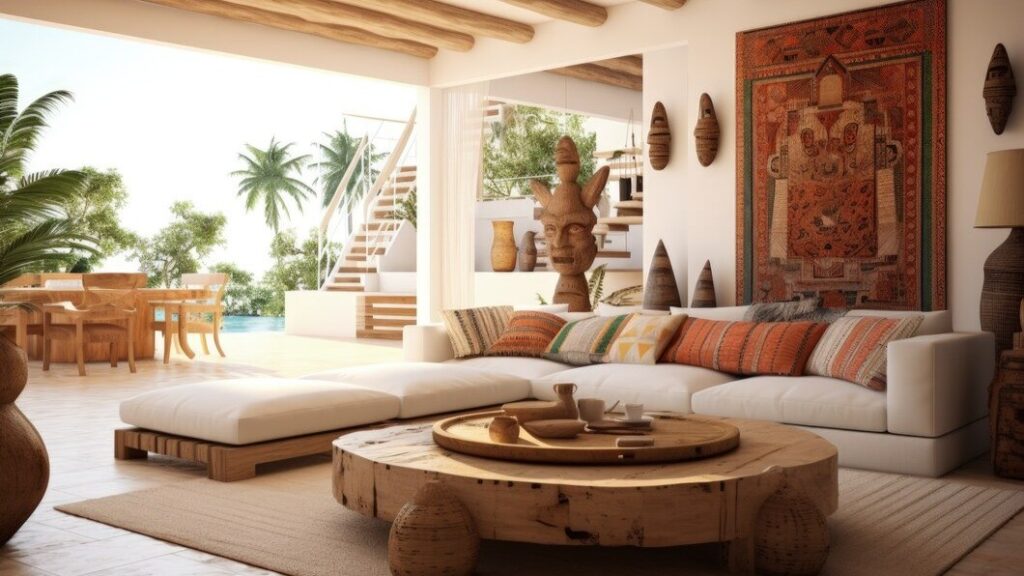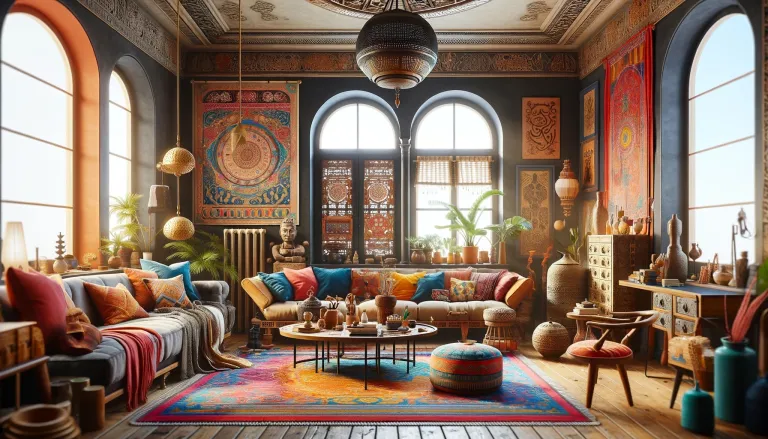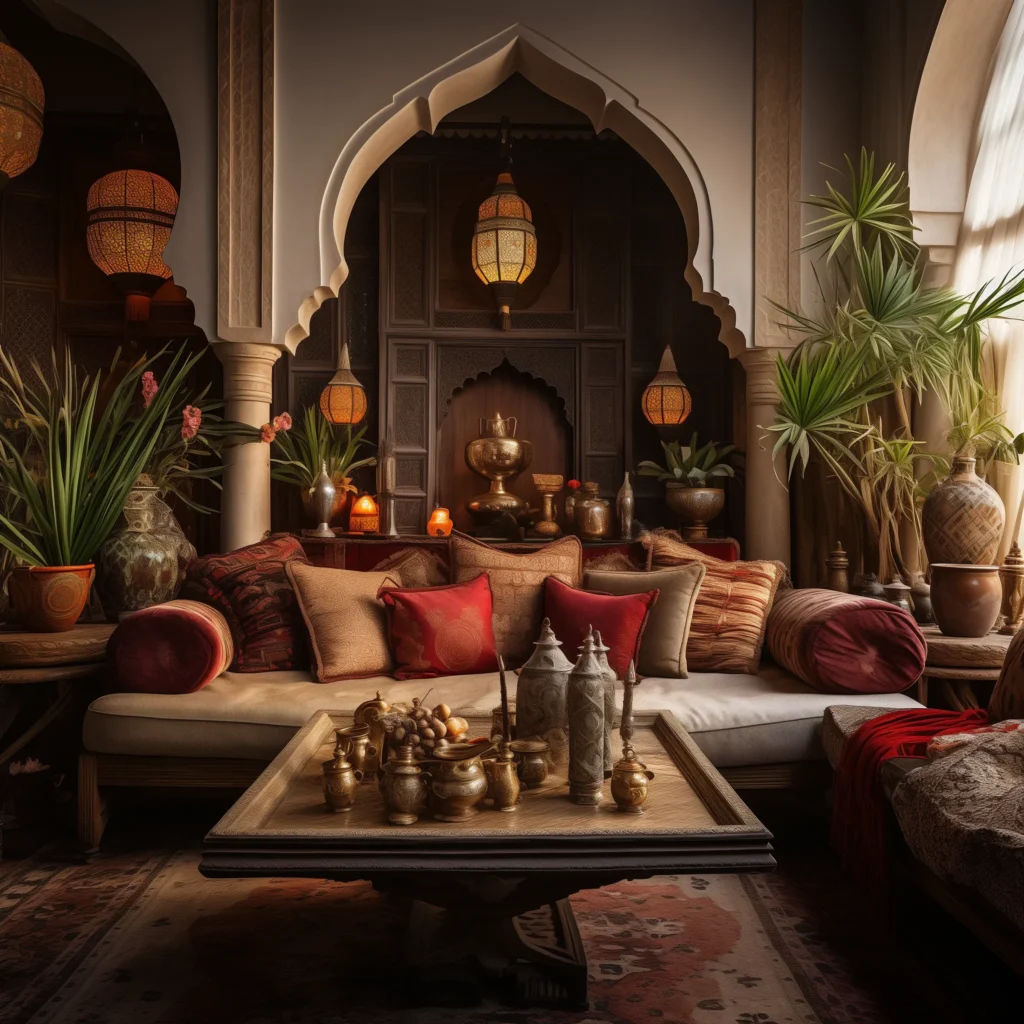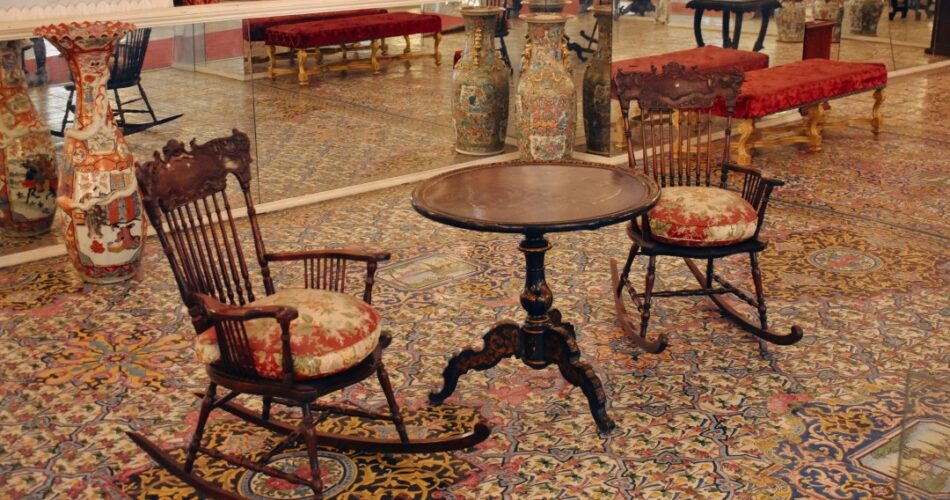Incorporating global elements into interior design is a wonderful way to infuse your home with personality, warmth, and a sense of connection to the world. Whether you’re drawn to the vibrant colors of Moroccan rugs, the clean lines of Japanese minimalist furniture, or the intricate patterns of Indian textiles, blending cultural influences can transform any space into a rich, dynamic environment. In this post, we’ll explore how you can incorporate global design elements into your home, adding unique character while embracing cultural diversity.
1. Understanding the Appeal of Global Design

The beauty of global interior design lies in its ability to mix traditional craftsmanship with contemporary living. Each culture brings its own distinctive style, using specific colors, textures, and materials that tell stories of history, tradition, and environment. By incorporating elements from different cultures, you can create a home that feels like an international oasis, showcasing the best of global design while celebrating diversity.
- Why It Matters: In a time of globalization, it’s easier than ever to find inspiration and design pieces from around the world. This approach not only enhances the aesthetic appeal of your space but also promotes a deeper understanding and appreciation of different cultures.
2. Key Cultural Elements to Incorporate

1. African Influence: Bold Colors and Natural Textures
African design is often associated with bold colors, geometric patterns, and natural materials. Many African-inspired interiors feature vibrant hues, such as reds, yellows, and earthy tones, alongside tactile textures like woven baskets, wood, and leather.
- How to Incorporate It: Use handmade baskets, wooden sculptures, or brightly colored textiles as accent pieces. Throw pillows or rugs with tribal patterns can add depth and texture to a room. You might also consider large statement pieces, such as African-inspired wall art or a carved wooden chair.
- Why It Works: African design emphasizes organic forms and craftsmanship, bringing an earthy, grounded quality to any space. These elements can be used to create a warm and welcoming environment, full of life and color.
2. Moroccan Influence: Rich Textures and Warmth

Moroccan interiors are known for their rich, opulent textures, intricate tile work, and a mix of patterns and colors. Deep reds, oranges, and golds are frequently used, alongside luxurious materials like silk, velvet, and marble.
- How to Incorporate It: Incorporate a Moroccan-style rug in your living room or hallway. You can also add intricately designed lanterns, brass trays, or poufs for seating. Mosaic tiles, often in geometric patterns, can be used as backsplashes in kitchens or bathrooms, while traditional Moroccan arches can add architectural flair.
- Why It Works: The relaxed yet sophisticated Moroccan aesthetic creates a cozy, inviting atmosphere. The combination of bold color and luxurious textures makes Moroccan-inspired decor perfect for spaces where you want to feel relaxed but also glamorous.
3. Japanese Influence: Minimalism and Natural Elegance
Japanese design is synonymous with minimalist aesthetics, clean lines, and the use of natural materials. Inspired by the Zen philosophy, Japanese interiors focus on creating a calm, peaceful atmosphere through simplicity and functional design.
- How to Incorporate It: Opt for low-profile furniture such as tatami mats, low wooden tables, or shoji screens for partitioning spaces. Use neutral colors like whites, blacks, and soft grays, and incorporate wood or bamboo for flooring, walls, and furniture. Indoor plants, such as bonsais or bamboo, can add a touch of nature to the room.
- Why It Works: The minimalist approach creates a tranquil, uncluttered space that feels open and airy. By focusing on functionality and quiet beauty, Japanese-inspired design brings serenity and a sense of balance into the home.
4. Indian Influence: Rich Patterns and Vibrant Textiles
Indian interior design celebrates the richness of culture through vibrant colors, intricate patterns, and luxurious textiles. Expect to see a mix of bold reds, purples, oranges, and golds, combined with intricate paisleys, mandalas, and florals in fabric and decor.
- How to Incorporate It: Incorporate rich fabrics like silk, velvet, or cotton for curtains, pillows, or throws. Traditional Indian furniture—such as carved wooden tables, mirrored accents, or ornate chairs—can make stunning statement pieces. Don’t forget to add handwoven rugs, often seen in traditional Indian designs, to bring warmth and texture to the room.
- Why It Works: Indian design is about layering different textures and colors to create a space full of life and character. The bold use of colors and patterns can transform a room into a visually captivating space, adding vibrancy and energy.
5. Scandinavian Influence: Clean Lines and Functionality
Scandinavian design emphasizes simplicity, functionality, and the beauty of nature. Known for its minimalist design, light color palettes, and functional yet stylish furniture, this design ethos focuses on creating spaces that are both aesthetic and practical.
- How to Incorporate It: Use light wood furniture, white walls, and simple textiles. Scandinavian design often incorporates pops of color, such as muted pastels or bold accent hues, through accessories like throws or pillows. Keep spaces open and uncluttered, with a focus on natural light and simple, sleek furniture.
- Why It Works: Scandinavian interiors promote a sense of calm and order, perfect for those who enjoy a clean, airy, and functional living space. This design style fits well in both small apartments and larger homes, making it incredibly versatile.
6. Latin American Influence: Colorful and Bold Patterns
Latin American design is vibrant, full of life, and known for its use of bold, contrasting colors, unique textiles, and artistic elements. It’s a celebration of culture, history, and craftsmanship, often with artisanal and handcrafted details.
- How to Incorporate It: Incorporate colorful woven textiles, such as blankets, pillows, or wall hangings, to add an immediate pop of color. Hand-painted pottery, brightly colored furniture, and metal accents in hues of gold, red, or turquoise bring vibrancy and personality to your home.
- Why It Works: Latin American design celebrates expression and creativity, infusing spaces with a sense of fun and energy. It’s perfect for creating a lively, welcoming atmosphere that feels full of warmth and personality.
3. Mixing Global Elements with Your Existing Decor
One of the best things about incorporating cultural influences is the flexibility it offers. You don’t need to redecorate an entire room to introduce global elements—small touches can make a big impact. Here are a few tips for blending cultural influences into your home:
- Start Small: Add a few cultural accents, such as a Moroccan lantern or an Indian textile, to complement existing pieces. These elements can immediately transform the mood of a room without overwhelming the space.
- Balance is Key: When mixing cultural styles, try to maintain balance. Too many conflicting elements can create visual chaos. If you add a vibrant, patterned piece, balance it with a more neutral or minimalist item to avoid overwhelming the room.
- Personalize with Art and Decor: Art is a fantastic way to incorporate cultural influences into your space. Whether it’s a handcrafted vase from Mexico or a handwoven rug from Turkey, art pieces add character and a personal touch to your home.
- Mix, Don’t Match: Global design is all about embracing diversity, so don’t be afraid to mix different cultural elements. Combining textures, patterns, and materials from various regions can create a cohesive and unique look that reflects your personality and interests.
4. The Benefits of Incorporating Global Influences
- Cultural Enrichment: Incorporating global elements into your home helps you celebrate the diversity of the world. It’s a visual reflection of appreciation for other cultures, offering both aesthetic and educational value.
- Unique Style: Global design influences often bring one-of-a-kind, handcrafted pieces that can’t be found in typical mainstream stores. This allows you to curate a truly unique living space that reflects your individuality.
- Sustainability: Many cultural designs feature handmade, locally sourced items, supporting artisans and promoting sustainability. By incorporating these items, you contribute to a more sustainable approach to design.
Conclusion
Incorporating cultural influences into your home can transform your space into a global sanctuary, filled with stories, textures, and beauty from around the world. Whether through bold textiles, natural materials, or intricate artwork, global design elements allow you to create a space that’s not only stylish but also reflective of diverse cultures and histories. Embrace the richness of global design and make your home a personal celebration of the world’s most beautiful and inspiring cultures.




